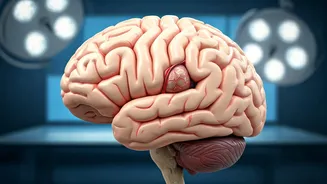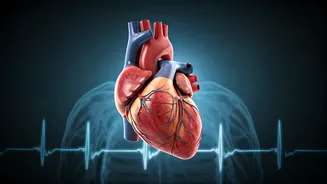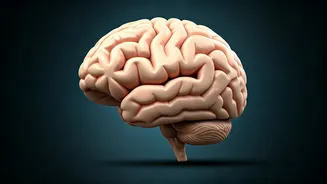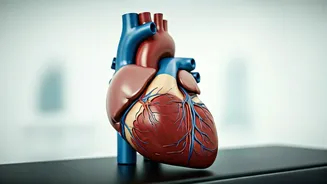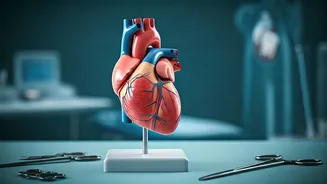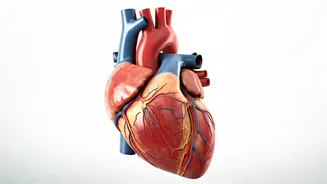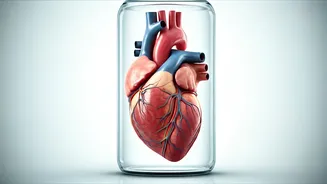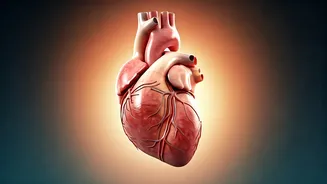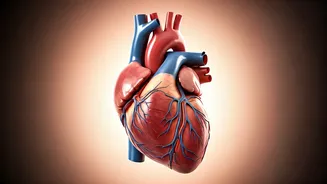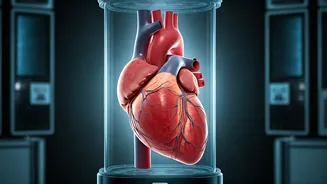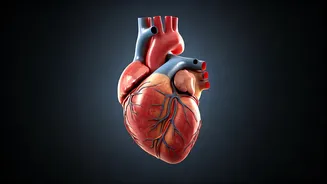What is it?
A brain aneurysm is essentially a bulge or weakening in the wall of a blood vessel within the brain. Think of it like a balloon that's starting to expand
on the side of a tire; the vessel wall becomes thin and could potentially rupture. These aneurysms can vary in size, from small, almost negligible bulges to quite large ones. While some aneurysms remain stable and cause no symptoms, others can grow, put pressure on surrounding brain tissue, and, crucially, rupture. When a brain aneurysm ruptures, it leads to bleeding in the space around the brain, a condition known as a subarachnoid hemorrhage, which is very dangerous and requires immediate medical attention.
Causes and Risk
Several factors contribute to the development of brain aneurysms, though the exact cause in many cases remains unknown. Certain conditions, such as high blood pressure and atherosclerosis (plaque buildup in arteries), can weaken blood vessel walls over time, increasing the risk. Genetics also play a role; if you have a family history of aneurysms, your chances of developing one are somewhat higher. Lifestyle choices also contribute. Smoking and excessive alcohol consumption have been linked to an increased risk. Other factors include head injuries, and infections. Additionally, certain medical conditions, like polycystic kidney disease, can be associated with a higher likelihood of aneurysm formation. Understanding these risk factors is vital to implementing preventative strategies.
Symptoms to Watch
The symptoms of a brain aneurysm vary depending on whether it has ruptured or not. Unruptured aneurysms often show no symptoms, especially when they're small. However, as they grow, they may press on nerves or surrounding brain tissue, causing symptoms like headaches, vision changes (blurred or double vision), pain above or behind the eye, a dilated pupil, or numbness or weakness on one side of the face. A ruptured aneurysm is a medical emergency and causes a sudden, severe headache, often described as the worst headache of your life. Other symptoms include nausea, vomiting, stiff neck, sensitivity to light, seizures, loss of consciousness, and even a sudden decline in cognitive function. Prompt medical intervention is crucial if any of these symptoms are present.
Lifestyle Adjustments
Making positive lifestyle changes can significantly lower the risk of developing brain aneurysms and potentially prevent existing ones from growing. Quitting smoking is paramount, as smoking damages blood vessels and increases the risk of aneurysm formation and rupture. Maintaining a healthy blood pressure through a balanced diet, regular exercise, and, if necessary, medication, is also crucial. Limiting alcohol consumption is recommended, as excessive drinking can contribute to high blood pressure. Additionally, a healthy diet, rich in fruits, vegetables, and whole grains, supports overall cardiovascular health, which benefits the blood vessels in the brain. Regular physical activity can help manage blood pressure and contribute to overall health. Addressing these lifestyle factors proactively can play a vital role in prevention.
Prevention Strategies
While not all cases can be prevented, several strategies can decrease your risk. The most important preventive measure is controlling risk factors such as high blood pressure and smoking. Regular medical check-ups can help detect conditions that can increase your risk, allowing for early intervention and management. If you have a family history of aneurysms, discuss this with your doctor; they may recommend screening, such as an MRI or CT scan. Maintaining a healthy diet, getting regular exercise, and limiting alcohol intake also contribute to overall cardiovascular health, reducing the likelihood of aneurysm formation. Education and awareness about the risk factors and symptoms are key to early detection, as they lead to quicker medical intervention.
